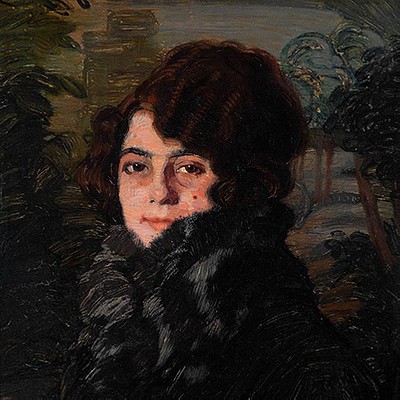European school; second half of the 19th century. "The maiden and death". Oil on canvas.
Lot 17
About Seller
Setdart Auction House
Carrer Aragó 346
Barcelona
Spain
Setdart Subastas was born in 2004 and is currently the first online art auction in Spain with solidity, prestige and reliability guaranteed by our more than 60,000 users. Setdart has a young, dynamic and enterprising team ready to successfully manage the purchase and sale of art works through custom...Read more
Estimate:
EUR€6,000 - EUR€7,000
$6,451.61 - $7,526.88
Absentee vs Live bid
Two ways to bid:
- Leave a max absentee bid and the platform will bid on your behalf up to your maximum bid during the live auction.
- Bid live during the auction and your bids will be submitted real-time to the auctioneer.
Bid Increments
| Price | Bid Increment |
|---|---|
| EUR€0 | EUR€10 |
| EUR€200 | EUR€25 |
| EUR€500 | EUR€50 |
| EUR€1,000 | EUR€100 |
| EUR€3,000 | EUR€200 |
| EUR€5,000 | EUR€500 |
| EUR€10,000 | EUR€1,000 |
| EUR€20,000 | EUR€2,000 |
| EUR€50,000 | EUR€5,000 |
About Auction
By Setdart Auction House
Jul 15, 2021
Set Reminder
2021-07-15 08:00:00
2021-07-15 08:00:00
America/New_York
Bidsquare
Bidsquare : 19th & 20th CENTURY PAINTINGS & ORIENTALISM
https://www.bidsquare.com/auctions/setdart-auction-house/19th-20th-century-paintings-orientalism-7212
Setdart Auction House sofia@setdart.com
Setdart Auction House sofia@setdart.com
- Lot Description
European school; second half of the 19th century. "The maiden and death". Oil on canvas. Signed in the lower right corner. Size: 160 x 200 cm. In this large format work the artist collects an intimate scene where a half-naked woman is stalked by a skeleton that grazes with his inert hand, the young arm of the young woman. The scene is shown to the viewer timeless and symbolic for the theme it represents. Although it is worth mentioning that this type of representation is based on a popular German theme in which a young woman was represented accompanied by death. These images usually had a certain sexual connotation, as well as representing the transience of life. By way of vanity whose name comes from a passage in Ecclesiastes (1,2): Vanitas vanitatum omnia vanitas (Vanity of vanities, all is vanity) and was used pictorially to introduce a reflection on the transience of life and the futility of worldly pleasures in the face of the certainty of death. The author thus offers us an image of restrained expressiveness, far from effusiveness, delicate and elegant. The figure appears completely naked, although rich fabrics cover the hip area, leaving only her legs in view. These fabrics present a great mastery in his workmanship showing the viewer the difference between various fabrics that make up and in turn build the scene, as through them creates an atmosphere of intimacy and opulence that surrounds the figures. Regarding the technical and formal aspects, the artist demonstrates a great mastery of the craft, a virtuosity especially evident in details such as the anatomical representation of both bodies, the hair of the young woman, which is gathered in a high bun, the flowers or brocades that can be seen in the fabrics that make up the scene, also worked based on short and detailed soft brushstrokes. However, where the author's personality shines more strongly, as already mentioned, is in the work of textures and qualities, subtly and masterfully achieved. We see slight folds in the different fabrics, in addition to the embroidery, and the representation of velvet. These characteristics show the classicist character of the scene, since the author plays to show a great virtuosity both in the drawing and in the use of color, without one predominating over the other.
- Shipping Info
-
In-house shipping available. Please inquire at admin@setdart.com.
-
- Buyer's Premium



 EUR
EUR CAD
CAD AUD
AUD GBP
GBP MXN
MXN HKD
HKD CNY
CNY MYR
MYR SEK
SEK SGD
SGD CHF
CHF THB
THB

















